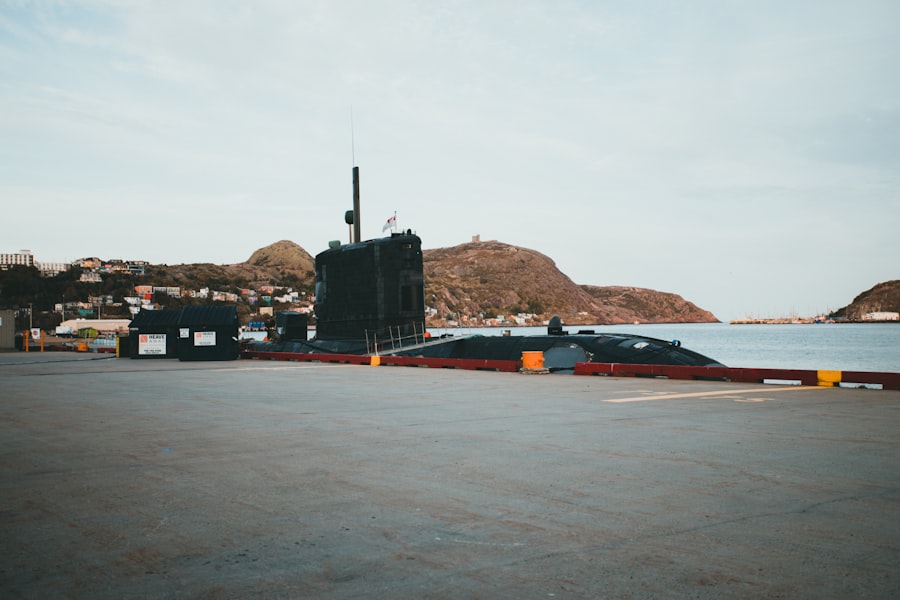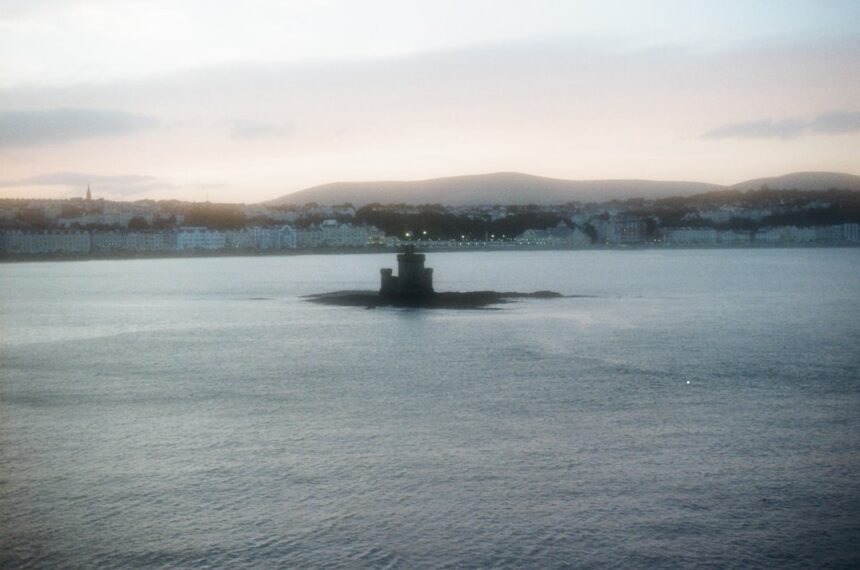The inception of nuclear power within the United States Navy marked a transformative era in naval warfare and maritime operations. The journey began in the early 1940s, during World War II, when scientists and military leaders recognized the potential of nuclear fission as a means to generate immense energy. The Manhattan Project, primarily focused on developing atomic weapons, also laid the groundwork for exploring peaceful applications of nuclear technology.
By the end of the war, the Navy had begun to envision a future where nuclear reactors could power ships, providing them with unprecedented endurance and operational capabilities. In 1948, the U.S. Navy established the Naval Reactors program, which aimed to develop nuclear propulsion systems for submarines and surface vessels.
” His relentless pursuit of safety and efficiency in nuclear technology led to the successful development of the first nuclear-powered submarine, USS Nautilus, which was launched in 1954. The Nautilus not only demonstrated the feasibility of nuclear propulsion but also heralded a new age of naval power, allowing submarines to operate underwater for extended periods without surfacing for fuel.
Key Takeaways
- The US Navy’s adoption of nuclear power in the 1950s revolutionized naval operations and capabilities.
- Nuclear-powered submarines provided unprecedented stealth, endurance, and speed, changing the nature of undersea warfare.
- The advantages of nuclear power for naval operations include extended range, reduced reliance on refueling, and increased operational flexibility.
- Nuclear-powered aircraft carriers play a crucial role in power projection and global force projection.
- The impact of nuclear power on naval warfare has been profound, shaping strategic thinking and military capabilities.
The Development of Nuclear-Powered Submarines
The development of nuclear-powered submarines revolutionized naval strategy and tactics. The USS Nautilus was a groundbreaking vessel that showcased the advantages of nuclear propulsion, including virtually unlimited range and endurance. Unlike conventional submarines that relied on diesel engines and required frequent surfacing for air, nuclear submarines could remain submerged for months at a time, significantly enhancing their stealth and operational capabilities.
This shift allowed the U.S. Navy to conduct prolonged missions without the constraints of fuel logistics. Following the success of the Nautilus, the Navy continued to expand its fleet of nuclear submarines.
The introduction of the Skipjack-class submarines in the late 1950s further advanced underwater warfare capabilities. These vessels were faster and more maneuverable than their predecessors, thanks to their streamlined designs and powerful nuclear reactors. The development of ballistic missile submarines, such as the George Washington-class, added a strategic dimension to naval power by providing a second-strike capability during the Cold War.
This evolution not only solidified the U.S. Navy’s dominance at sea but also played a crucial role in deterring potential adversaries.
The Advantages of Nuclear Power for Naval Operations

Nuclear power offers several distinct advantages for naval operations that have fundamentally changed how modern navies conduct warfare. One of the most significant benefits is the extended operational range that nuclear-powered vessels enjoy. Unlike conventional ships that require regular refueling, nuclear vessels can operate for years without needing to refuel their reactors.
This capability allows them to undertake long-range missions and maintain a persistent presence in strategic regions around the globe. Moreover, nuclear power enhances a vessel’s speed and agility. Nuclear-powered ships can achieve higher speeds than their diesel counterparts, enabling them to respond rapidly to emerging threats or crises.
This speed advantage is particularly crucial in naval warfare, where time can be a decisive factor. Additionally, the reduced need for fuel logistics allows naval commanders to allocate resources more efficiently, focusing on mission objectives rather than worrying about refueling schedules.
The Role of Nuclear-Powered Aircraft Carriers
| Metrics | Details |
|---|---|
| Speed | Exceeds 30 knots (56 km/h) |
| Endurance | Unlimited range due to nuclear power |
| Power | Provides significant electrical power for onboard systems |
| Operational Capability | Allows for extended deployment without refueling |
| Cost | Higher initial cost but lower lifetime cost compared to conventionally powered carriers |
Nuclear-powered aircraft carriers serve as the centerpiece of modern naval fleets, embodying the strategic advantages of nuclear propulsion. These colossal vessels are capable of projecting power across vast distances, serving as floating airbases that can launch and recover aircraft in any theater of operation. The USS Enterprise, commissioned in 1961, was the first nuclear-powered aircraft carrier and set a precedent for future carriers that followed.
The advantages of nuclear propulsion in aircraft carriers are manifold. With their ability to operate for extended periods without refueling, these carriers can sustain air operations over long durations, providing continuous support for ground forces or conducting airstrikes against enemy targets. Furthermore, their speed allows them to reposition quickly in response to changing tactical situations, ensuring that they remain relevant in dynamic combat environments.
The combination of air power and nuclear propulsion has made these carriers indispensable assets in U.S. naval strategy.
The Impact of Nuclear Power on Naval Warfare
The introduction of nuclear power into naval operations has had profound implications for naval warfare strategies and doctrines. The ability to deploy submarines and aircraft carriers with nuclear propulsion has altered the balance of power at sea, enabling navies to project force more effectively than ever before. The Cold War era exemplified this shift, as both the United States and the Soviet Union invested heavily in developing their nuclear fleets to deter each other from engaging in direct conflict.
Nuclear-powered vessels have also changed how navies approach deterrence strategies. The concept of mutually assured destruction (MAD) became central during the Cold War, with both superpowers maintaining a fleet of nuclear submarines capable of launching retaliatory strikes if attacked. This strategic posture relied heavily on the stealth and endurance provided by nuclear propulsion, allowing submarines to remain hidden while maintaining a credible threat against adversaries.
As a result, naval warfare has evolved into a complex interplay of deterrence, power projection, and technological advancements.
The Evolution of Nuclear Technology in the US Navy

Over the decades, nuclear technology within the U.S.
The initial designs of nuclear reactors were relatively simple and focused primarily on providing propulsion for submarines and aircraft carriers.
However, as operational demands grew more complex, so too did the technology behind these reactors. The development of more efficient reactor designs has allowed for increased safety and reliability in naval operations. Modern reactors are equipped with advanced safety features that minimize risks associated with radiation exposure and reactor malfunctions.
Additionally, innovations in materials science have led to lighter and more durable components that enhance overall performance while reducing maintenance requirements. As a result, today’s nuclear-powered vessels are not only more capable but also safer for their crews and the environment.
The Strategic Importance of Nuclear-Powered Naval Vessels
Nuclear-powered naval vessels hold immense strategic importance for national security and global stability. Their ability to operate independently for extended periods allows them to maintain a presence in critical regions without relying on foreign bases or logistical support. This capability is particularly vital in areas where geopolitical tensions are high or where access to traditional ports may be restricted.
Furthermore, these vessels serve as powerful symbols of national strength and technological prowess. The mere presence of a nuclear-powered submarine or aircraft carrier can deter potential adversaries from aggressive actions, reinforcing diplomatic efforts through displays of military capability. In this way, nuclear-powered vessels play a dual role: they are not only instruments of war but also tools of diplomacy that help maintain peace through strength.
The Training and Expertise Required for Nuclear Operations
Operating nuclear-powered vessels requires a highly specialized skill set and extensive training for personnel involved in their operation and maintenance. The U.S. Navy invests significant resources into training programs designed to ensure that sailors are well-prepared to handle the complexities associated with nuclear technology.
This training encompasses various aspects, including reactor operations, safety protocols, radiation protection, and emergency response procedures. Sailors assigned to nuclear-powered vessels undergo rigorous training at facilities such as the Naval Nuclear Power Training Command in South Carolina. This program combines classroom instruction with hands-on experience in simulators that replicate real-world scenarios encountered aboard nuclear vessels.
Additionally, ongoing training ensures that personnel remain current with technological advancements and safety practices throughout their careers.
The Global Reach of Nuclear-Powered Naval Vessels
The global reach of nuclear-powered naval vessels has reshaped international maritime dynamics and influenced global security arrangements. With their ability to operate far from home ports for extended periods, these vessels can project power into regions where traditional naval forces may struggle to maintain a presence. This capability allows nations with nuclear fleets to assert influence over strategic waterways and respond rapidly to emerging crises.
Moreover, the proliferation of nuclear-powered vessels among various navies has led to increased competition and strategic posturing on the global stage. Countries such as Russia and China have developed their own fleets of nuclear submarines and aircraft carriers, prompting concerns about regional security dynamics and potential arms races. As nations seek to enhance their naval capabilities through nuclear technology, the balance of power at sea continues to evolve.
The Future of Nuclear Power in the US Navy
Looking ahead, the future of nuclear power in the U.S. Navy appears promising yet challenging. As technological advancements continue to emerge, there is potential for further innovations in reactor design and propulsion systems that could enhance performance while addressing safety concerns.
The Navy is exploring next-generation technologies such as small modular reactors that could provide even greater flexibility in naval operations. However, challenges remain regarding public perception and environmental considerations associated with nuclear power. As society becomes increasingly aware of environmental issues related to energy production and waste management, the Navy must navigate these concerns while continuing to leverage the advantages offered by nuclear propulsion.
Balancing operational needs with environmental stewardship will be crucial as the Navy charts its course into an uncertain future.
The Ethical and Environmental Considerations of Nuclear-Powered Naval Operations
The use of nuclear power in naval operations raises important ethical and environmental considerations that cannot be overlooked. While nuclear propulsion offers significant advantages in terms of operational efficiency and strategic capabilities, it also poses risks related to radiation exposure and potential accidents at sea. Incidents involving nuclear-powered vessels have highlighted these concerns, prompting calls for greater transparency and accountability within naval operations.
Additionally, environmental implications associated with nuclear waste disposal present ongoing challenges for policymakers and military leaders alike. Ensuring that spent fuel is managed safely and responsibly is essential not only for protecting marine ecosystems but also for maintaining public trust in military operations involving nuclear technology. As discussions surrounding climate change and sustainability gain prominence globally, addressing these ethical dilemmas will be critical for shaping the future trajectory of nuclear power within the U.S.
Navy. In conclusion, while nuclear power has undeniably transformed naval operations by enhancing capabilities and extending reach, it also necessitates careful consideration of its ethical implications and environmental impact as it continues to evolve within military contexts.
The United States Navy’s nuclear edge has been a pivotal factor in maintaining its strategic superiority and operational readiness. This advantage is rooted in decades of innovation, rigorous training, and strategic investments in nuclear technology. A related article that delves into the historical and technological advancements that have contributed to the Navy’s nuclear capabilities can be found on the In The War Room website. For a comprehensive understanding of how the US Navy developed its nuclear prowess, you can read more in this article. This resource provides valuable insights into the evolution of naval nuclear power and its impact on modern military strategy.
WATCH THIS! America’s Nuclear Navy Was Born From Espionage
FAQs
What is the history of the US Navy’s nuclear edge?
The US Navy’s nuclear edge can be traced back to the development of nuclear-powered submarines and aircraft carriers in the 1950s and 1960s.
How did the US Navy develop its nuclear edge?
The US Navy developed its nuclear edge through significant investment in research and development, as well as collaboration with the Atomic Energy Commission and private industry.
What are the advantages of the US Navy’s nuclear edge?
The US Navy’s nuclear edge provides greater endurance, speed, and stealth capabilities compared to conventionally powered vessels. It also allows for longer deployment times and reduced reliance on refueling.
How does the US Navy maintain its nuclear edge?
The US Navy maintains its nuclear edge through ongoing investment in nuclear propulsion technology, as well as continuous training and education for its personnel.
What impact has the US Navy’s nuclear edge had on global maritime operations?
The US Navy’s nuclear edge has significantly enhanced its ability to project power and maintain a strong presence in strategic regions around the world. It has also influenced the development of naval strategies and capabilities among other maritime nations.




